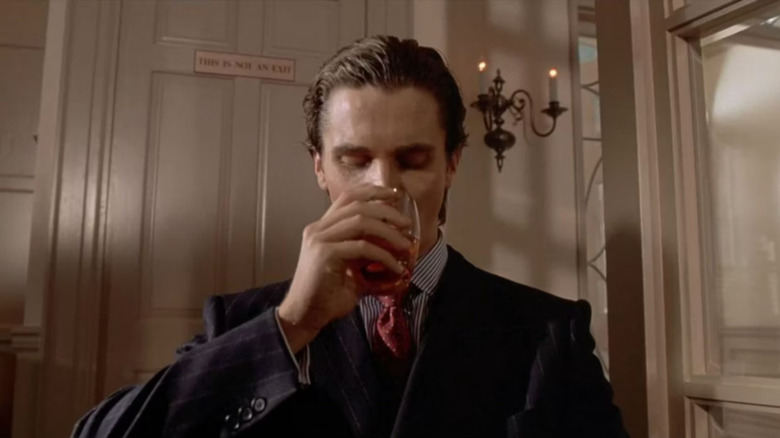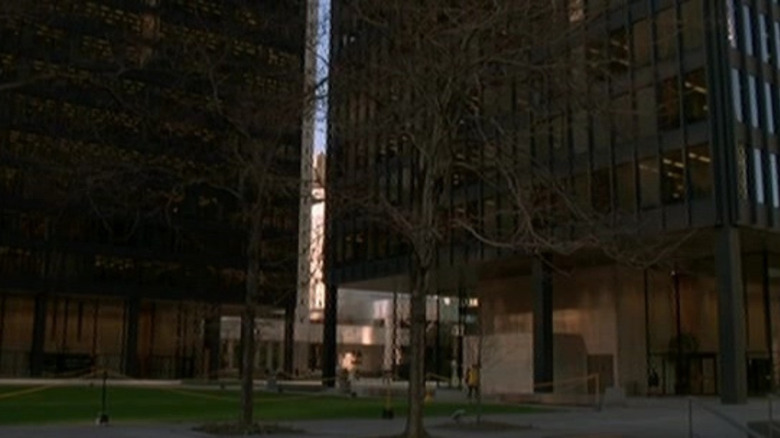How American Psycho's Filming Locations Helped Feed The Story's Narrative
Are we in general agreement that Mary Harron's adaptation of "American Psycho" is better than the original Bret Easton Ellis novel? If so, then good — while the original book does hold significance within the history of postmodern literature, the changes made to bring it to the screen fleshed out its themes more effectively. One of these themes was that of identity, specifically how Patrick Bateman (Christian Bale) struggled to keep his separate identities as a banking yuppie and a serial killer from merging together. The increasing intermingling of these facades, as well as their individual shakiness, led to his eventual downfall.
This theme exists throughout film, right down to its locations. While "American Psycho" is set in New York City, it was actually shot in Toronto, Ontario, Canada. This decision allowed its themes of fractured identity to shine through. Harron discussed this in an interview with the website and archive e-flux, bringing up one specific and pivotal scene as an example:
"The one scene where we really did have to use Toronto for New York is the big kind of climax of the movie, when he's in a panic and he runs to his office. And [the production team] suggested shooting in the Toronto-Dominion Centre, which is these two identical towers in a plaza. Really beautiful architecture, Mies van der Rohe, and sort of classic, beautiful modernism. And the idea of the identical towers was so great because the story itself has a lot of doubling. It's about mistaken identity."
It's hip to be square
Looking at the Toronto-Dominion Centre today, you can definitely see why it would be the perfect setting for that climax. It's unassuming, postmodernist, and by today's standards, very generic. So much of Bateman's characterization lies in the idea that he's "better" than everyone else because of his two identities — but deep down, he's just as scared and boring as everyone else, no matter how many people he kills to convince himself otherwise.
"The whole idea of the mistaken identity is in the towers, because he runs into one thinking it's his office, and it's not," Harron told e-flux, "and he ends up shooting a guard, and then he runs across the plaza to the other identical tower, where he finally makes a confession to his lawyer."
By making that location the place where he confesses his crimes, he's accepted his normalcy and finally, albeit unwillingly, relinquished his desperation to be unique. The only problem for him is that his identities have merged so much, his sense of reality has broken, leaving the question of whether or not he actually is a murderer in the air. This is demonstrated in the climactic scene where Bateman runs into the Toronto-Dominion Centre towers, frantic and lost.

